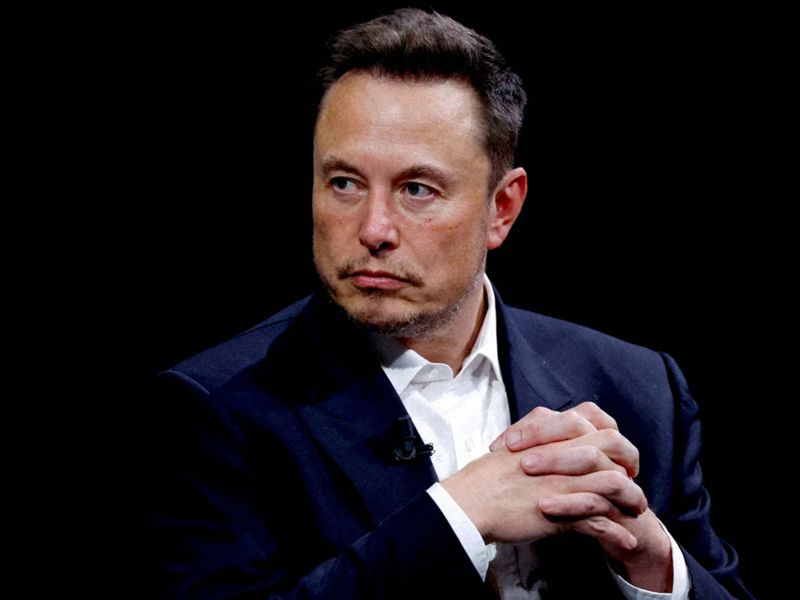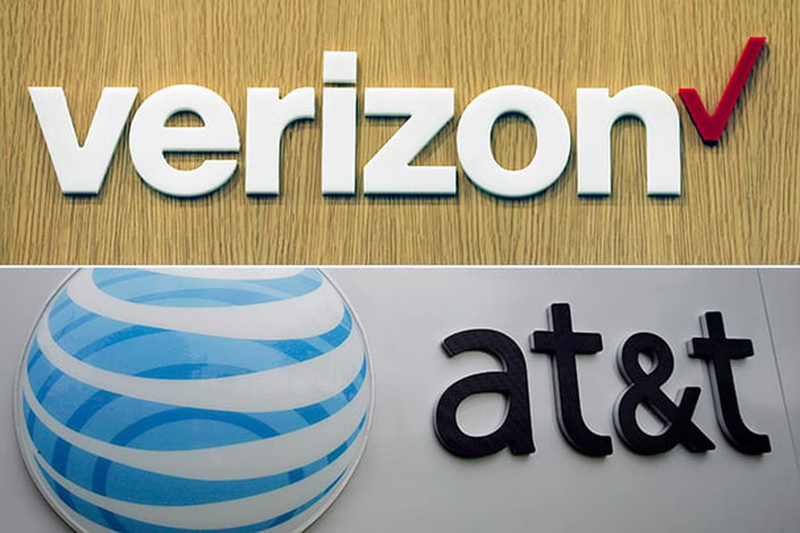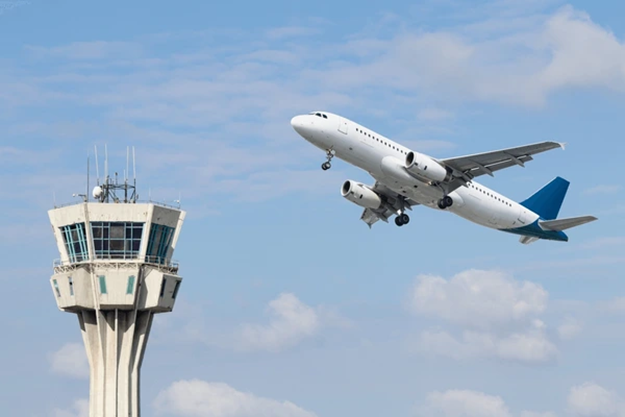Starlight's $2.4 Billion Takeover to Overhaul Air Traffic Control Communication
Input
Changed
Elon's $2.4 Billion Takeover and Modernization of the US air traffic control communication system Rivals’ Reactions and Potential Conflicts of Interest The Future of Air Traffic Control and Telecom Industries

Elon's $2.4 Billion Takeover and Modernization of the US air traffic control communication system
The rise of Elon Musk and his company, SpaceX, has been nothing short of transformative. From its groundbreaking work in space exploration to the development of its internet service, Starlink, Musk’s influence has extended into numerous sectors. Now, in what could be one of the most significant developments in both the aviation and telecommunications industries, Musk's company is poised to take over a $2.4 billion contract to modernize the air traffic control communication system of the United States, a contract that was previously held by telecom giants like Verizon and AT&T.
This move could mark the beginning of a massive shift in how air traffic control systems are managed and could have far-reaching implications for the telecommunications sector, particularly for Verizon, AT&T, and other competitors. However, as is often the case when Musk is involved, this potential overhaul has sparked a fierce debate about whether this shift is in the best interest of the public and the industry or if it represents a concentrated push towards corporate monopoly and undue influence.
The project in question aims to upgrade the outdated communication system used by the FAA (Federal Aviation Administration) to control air traffic across the country. This is a multi-faceted issue that has to do with both the safety of air travel and the efficiency of air traffic management. The current air traffic control system, which is still dependent on older communication technologies, has been widely criticized for its inability to handle modern aviation needs, particularly when it comes to ensuring seamless communication between pilots and air traffic controllers in remote or high-density airspace regions.
The air traffic control system is a critical element in ensuring the safety of the aviation industry. Currently, the FAA relies on a patchwork of satellite and ground-based communications technologies, which were designed several decades ago and are increasingly falling behind the needs of a rapidly growing and modernizing aviation sector. As the number of flights per day increases, especially in remote regions such as over the oceans or across mountainous areas, communication issues have become more apparent.
This gap in communication technology poses significant challenges. For example, air traffic controllers often rely on radar systems, which can be limited by geography and weather conditions, creating communication blind spots. These challenges are exacerbated when aircraft are operating over vast distances where ground-based communication systems cannot provide the coverage needed for secure and reliable communication. Given these limitations, many experts in the aviation industry have called for a complete overhaul of the air traffic control system to address these pressing issues and meet the demands of future air travel.
In addition to safety concerns, there are also growing issues related to the efficiency of the current air traffic system. Outdated systems contribute to delays, miscommunications, and inefficiencies that cost both the industry and passengers valuable time and money. As global air traffic continues to rise, the FAA’s outdated systems are under increased strain, prompting calls for modernization.
One company that has positioned itself as a potential solution to these issues is SpaceX, Elon Musk’s private space exploration company. Starlink, a subsidiary of SpaceX, has been working to provide global internet coverage through a constellation of low Earth orbit (LEO) satellites. These satellites are capable of providing high-speed, low-latency internet access to even the most remote parts of the world, which makes Starlink a potentially perfect solution for modernizing air traffic control communication.
The technology behind Starlink promises to solve many of the communication gaps that the FAA has struggled to address with its current infrastructure. With its global satellite network, Starlink can provide continuous, reliable communication between aircraft and air traffic controllers across all regions, regardless of whether they are flying over remote areas or densely populated airspace.
In theory, Starlink’s satellite-based system could completely replace the outdated ground-based radar and radio communication systems currently in use. The benefit of using a satellite network for air traffic control is clear: it eliminates geographic limitations, provides more consistent coverage, and reduces the likelihood of communication failures. By utilizing the capabilities of SpaceX's Starlink system, the FAA could drastically improve the safety, efficiency, and reliability of air traffic control communication, making the aviation industry safer and more efficient as a whole.
The contract for this overhaul is expected to be worth $2.4 billion, a significant sum, and if successful, it would position Starlink as a key player in one of the most crucial infrastructure sectors in the United States. With Musk’s track record of achieving ambitious goals, this potential contract represents a new chapter in Starlink’s ambitions, pushing the company further into the realm of government contracts and public infrastructure.

Rivals’ Reactions and Potential Conflicts of Interest
The major telecom players, notably Verizon and AT&T, have long held a dominant position in providing communication services for government agencies, including the FAA. Verizon, in particular, has had long-standing contracts with the FAA to provide the communication systems needed for air traffic control. These partnerships have been a significant source of revenue for the telecom giant, and the potential loss of such a lucrative government contract to a new player like Starlink has raised alarms within the industry.
The concern stems from several areas, but perhaps the most pressing is the possibility that Starlink’s government ties, particularly its relationship with Elon Musk, could unduly influence the decision-making process. Musk’s growing influence in Washington and his company’s ability to secure government contracts has raised questions about whether the government’s decisions in awarding these contracts are being made in the most objective manner. This has resulted in accusations from industry insiders that the FAA's decision-making process could be biased, and some have argued that the situation may represent a conflict of interest, especially if Starlink is given control over a crucial government contract in a sector as vital as air traffic control.
Verizon and AT&T, both of which are significantly involved in providing communications infrastructure to the federal government, may also feel that they have been pushed out of the conversation entirely, particularly since Starlink offers a new, innovative solution that bypasses the traditional telecommunications model. The competition between these established telecom companies and the newer space-based communication service from Starlink may lead to aggressive counterattacks from the telecom giants, who will be looking to protect their market share.
While Starlink’s potential contract represents an innovative solution to a long-standing problem, it also raises questions about government involvement in selecting contractors for critical infrastructure projects. Elon Musk’s growing influence over government decisions has raised concerns in certain circles about fairness and transparency, with critics suggesting that his powerful presence in both the private sector and public policy might lead to undue influence.
Some critics argue that while Starlink’s technology might indeed be a revolutionary solution, the involvement of Musk’s companies in government projects could undermine the integrity of the procurement process. The risk is that government contracts may become more about personal connections and influence rather than being awarded based on merit. Furthermore, concerns about monopolization arise as Musk continues to expand his influence over multiple industries. The idea that a single private individual could dominate so many sectors — from space exploration to communication infrastructure — raises broader questions about the potential dangers of such concentration of power.

The Future of Air Traffic Control and Telecom Industries
As discussions about the future of air traffic control and the FAA’s decision to award a significant contract to SpaceX continue to unfold, it’s clear that the stakes are high. If Starlink’s solution succeeds, it could not only revolutionize the way air traffic is controlled but also reshape the telecom industry in profound ways.
Should Starlink be awarded the contract, the telecom industry will likely see substantial changes in how air traffic control communication services are structured. This will put pressure on telecom companies like Verizon and AT&T to rethink their strategies and explore how they can adapt to the rapidly changing technological landscape. They will likely increase their efforts to compete with Starlink’s satellite network and invest more heavily in their own technological advancements to avoid falling behind in the government contracting space.
The potential takeover of the $2.4 billion air traffic control contract by Starlink represents a major development in both the aerospace and telecommunications industries. Elon Musk’s ability to leverage the technology behind SpaceX and Starlink to address critical issues in air traffic control is undeniable. However, this shift also raises concerns about competition, fairness, and the growing influence of private individuals on government decisions. The future of air traffic control, as well as the role of telecommunications giants in providing essential services, will likely be shaped by the ongoing developments surrounding Starlink and its ambitions in this crucial industry.
As the FAA evaluates Starlink’s bid and weighs its options, the government’s decision will not only affect the future of aviation but could have lasting implications for the telecom industry and the broader landscape of government contracting. The outcome of this contract could determine the shape of infrastructure projects for decades to come, with ripple effects in every industry it touches.





















